Today we are interested in a painting that is not exhibited in a museum or an art gallery but… in the Eastern Train Station in Paris! And this hanging owes nothing to chance. The painting “Le départ des poilus, août 1914” (The Departure of the Infantrymen, August 1914) by the American painter Albert Herter reminds us that it was from this station that thousands of soldiers left to fight in the First World War.
What does this painting represent? Why was it painted by an American? And what does it tell us about the war? Zoom in on a deeply moving painting…
The departure of the poilus
Located in the main hall of the Paris Eastern train station, this huge 5 x 12 metre canvas does not attract much attention from travellers. However, it is a poignant testimony to an event that took place here between 1914 and 1918: the departure of soldiers for war.
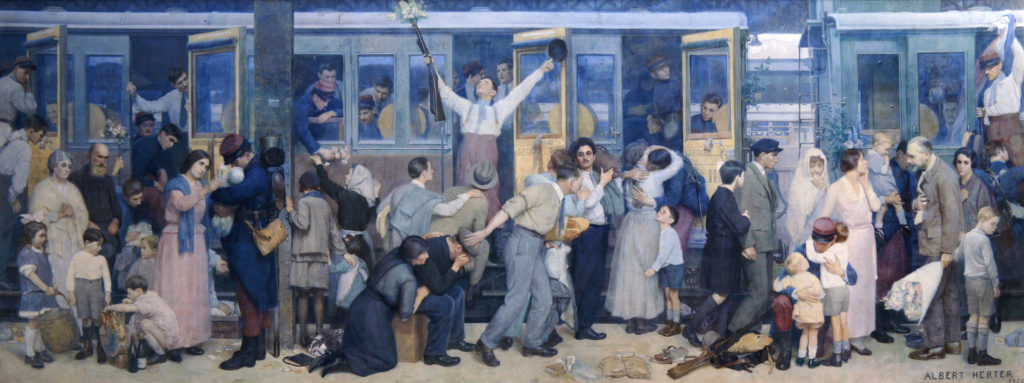
The painting shows several soldiers boarding a train. On the platform and at the windows, many of them are greeting their loved ones. If we look closely at each of the scenes depicted, we can see couples separating, parents greeting their sons or children embracing their fathers.
The scene is not faithful to history: when the soldiers left, the families did not have access to the quays and everyone left in their everyday clothes, as uniforms had not yet been distributed. However, the painting bears witness to the state of mind that prevailed at the beginning of the war, the departure was made with determination and confidence. It was thought that the conflict would not last and that everyone would soon be back home. No one imagined that the war would last four years and that the human toll would be so high.
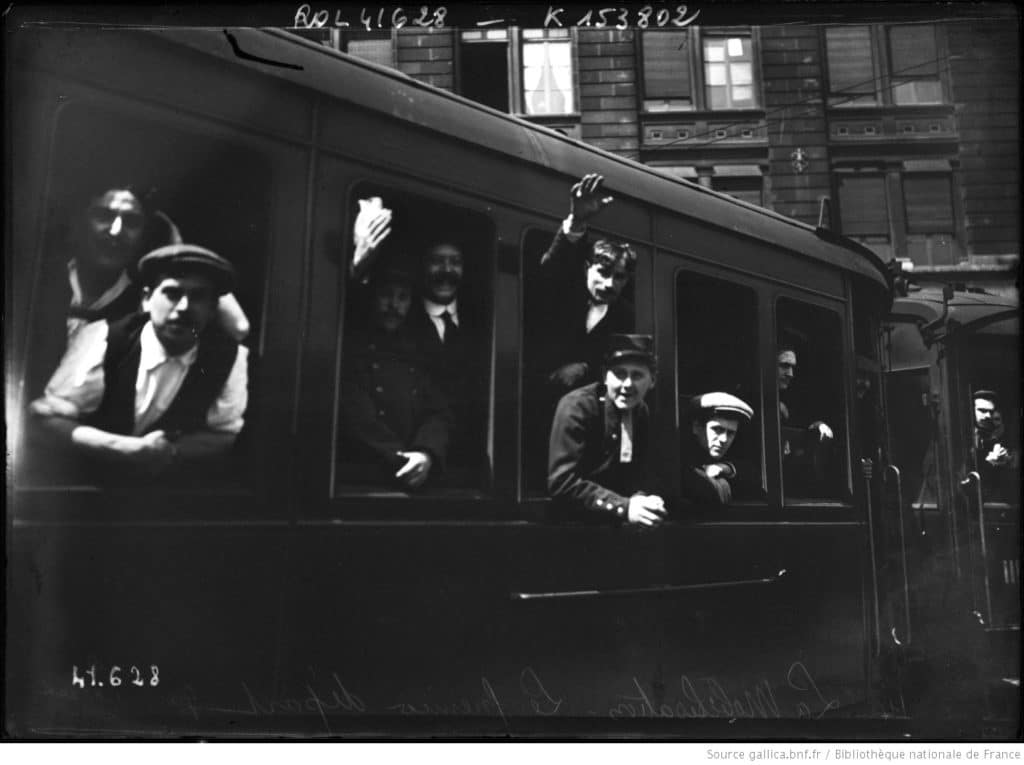
A father’s tribute to his son who died in the war
In the midst of these separating families, two figures stand out at either end of the canvas. A man and a woman appear livid, staring into the distance, hands clasped or holding a bouquet. They are the painter himself and his wife, saluting the memory of their son, Everit.

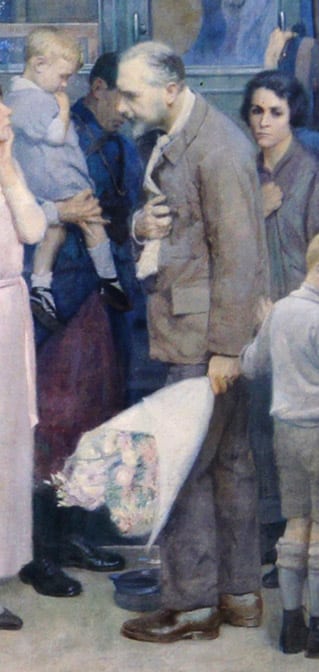
The latter, who volunteered for the American troops, died in France in 1918 in the Aisne. He is depicted in the middle of the painting with his arms raised and “flower in the gun”.
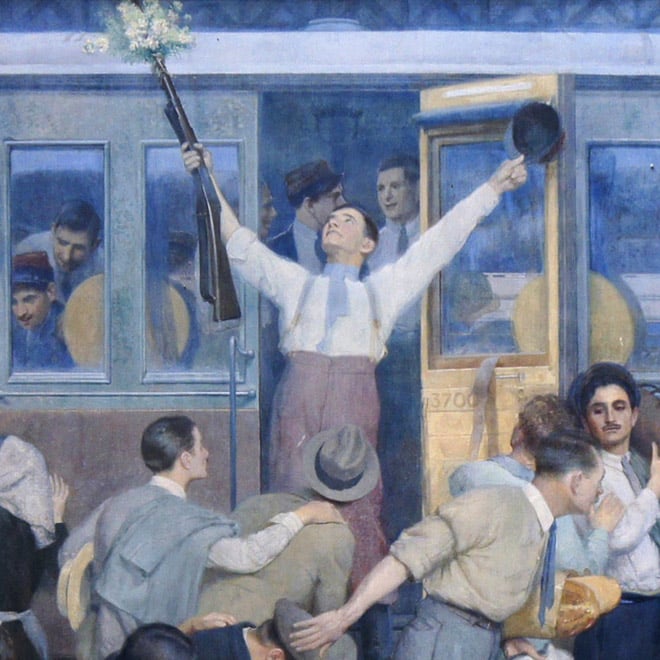
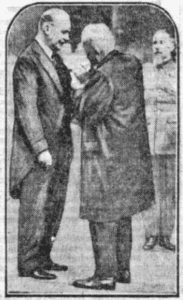
Albert Herter donated the painting to France in 1926. It was inaugurated on 7 June of the same year in the Paris Eastern train station in the presence of Marshal Joffre, the Minister of War, Paul Painlevé, and the American ambassador, in front of “a crowd deeply moved by the vision that would henceforth be offered to them and by the words that exalted the sacrifice of so many of our own and so many young Americans”, as the Petit Parisien reported. An inauguration commemorating – according to the speeches given on this occasion – “one of the most poignant minutes that have sounded on the dial of humanity”.
For this painting, Albert Herter was decorated with the Légion d’Honneur (Legion of Honour).

The role of Paris Eastern train station in the war
Passing through the “hall, seat of all the hurries and all the forgetting” (1), today’s travellers do not necessarily think of everything that took place in this station. A nerve centre for wartime logistics, the Paris Eastern train station was used to transport equipment and take soldiers to the front, but also to provide leave, which was often very difficult for the poilus, who were rediscovering a “civilised” world far from the world of the trenches before having to return to combat.

In addition to the painting by Albert Herter, the Paris Eastern train station has many other signs of the war: an allegorical sculpture of Verdun adorns the pediment; the forecourt has been renamed Place du 11 novembre 1918; on the facade a plaque commemorates the memory of those who “left between 1914 and 1918 to defend their City and their Homeland”; and on the level of the platforms, another plaque is dedicated “to the railway workers of the Eastern network who died for France”.
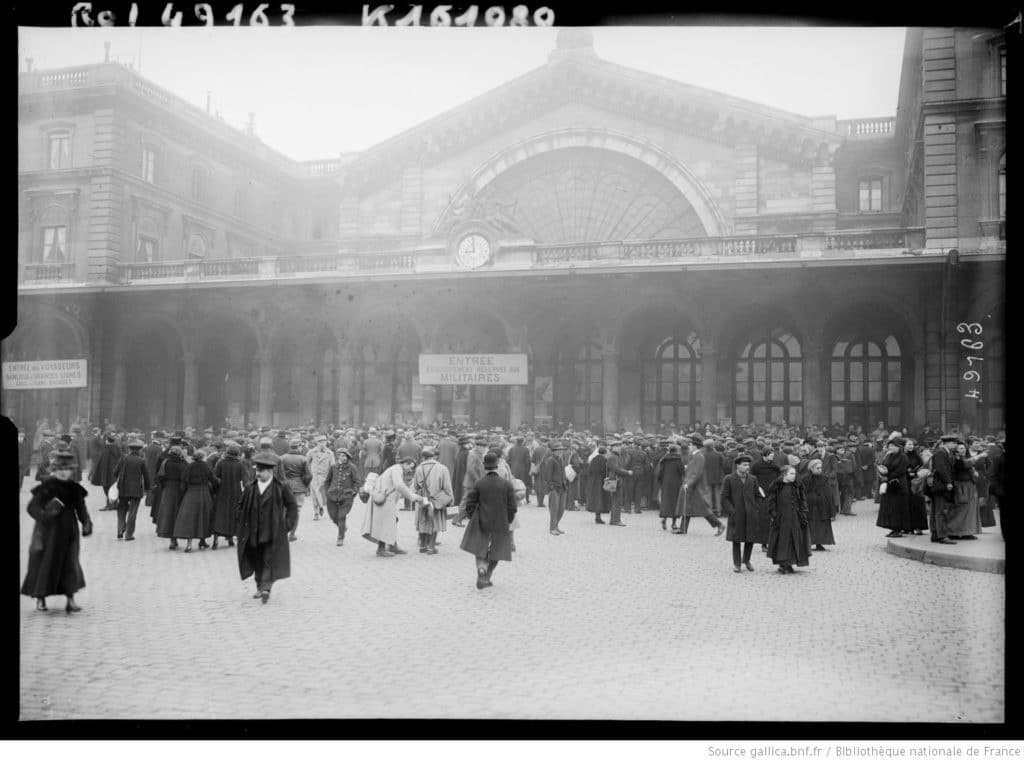
(1) Extract from Mr de Monzie’s speech at the inauguration of the painting





People reacted to this story.
Show comments Hide commentsMany sad faces, a few smiling, and going off to \”war\” to fight (and kill) the \”enemy\” not knowing the great and tragic human toll, nor the consequences of the \”after war\” return. Such a monumental waste of human lives – war. They teach our young ones how to fight and to kill another human being, God\’s creation, but not how to return home to live a \”normal\” life. There is no \”normal\” after suffering the after effects of any war.